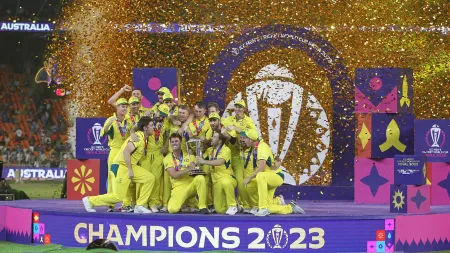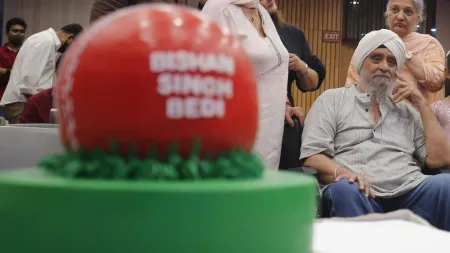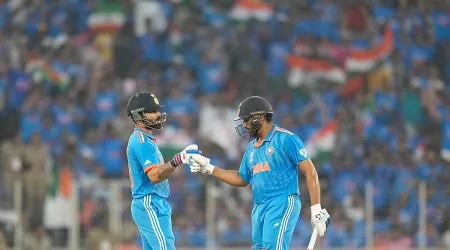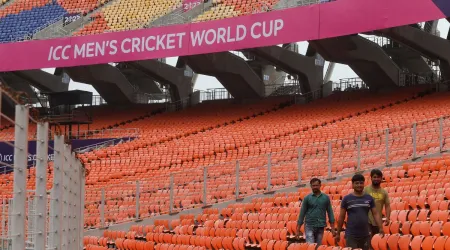- India
- International
Making of Harshal Patel’s comeback: Dylan, dipping yorkers, advice from Zaheer, RCB’s backing
Harshal Patel ended the IPL with 32 wickets, joint most with Dwayne Bravo for most wickets in any season, besides winning the man of the match award on his international debut, against New Zealand in Ranchi.
 Harshal Patel being greeted by his skipper Rohit Sharma after dismissing New Zealand batsman Glenn Phillips during their 2nd Twenty20 cricket match at JSCA International Stadium Complex in Ranchi on Friday. (PTI)
Harshal Patel being greeted by his skipper Rohit Sharma after dismissing New Zealand batsman Glenn Phillips during their 2nd Twenty20 cricket match at JSCA International Stadium Complex in Ranchi on Friday. (PTI)Behind Harshal Patel’s death-over metal is music of a subtler variety, which he explains to Pratyush Raj. Patel’s has been an eventful journey, one laden with rejection and dejection, doubts and setbacks, but from one which he emerged stronger to blossom late with a little inspiration from Dylan songs.
There is music to Harshal Patel’s bowling. The rhythmic strides into crease, the unhurried gather and release, and the note-perfect riffs of his deliveries. The music he produces with the ball is a fusion of cricket’s subtle tones—curl, dip, swerve, cut, and change of pace. For batsmen last IPL, those were deathly tunes, as he ended the league with 32 wickets, joint most with Dwayne Bravo for most wickets in any season, besides winning the man of the match award on his international debut, against New Zealand in Ranchi.
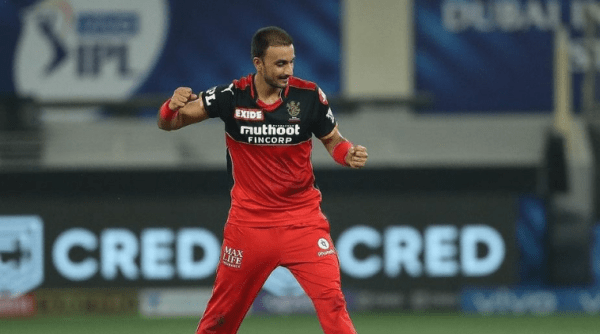 (Instagram/Harshal Patel)
(Instagram/Harshal Patel)
There is music in his life too. A song, mostly of his favourite singer Bob Dylan, plays in his ears all the time. Often, its one of Dylan’s most political song, Masters of War, a poignant song in the backdrop of the Vietnam War, a song about the greed of arm merchants. “This song has wisdom which has lasted generations and it will last generations. The truth in this song is just mind-blowing,” pipes in Patel.
Patel could reproduce a couple of lines, like Frank Tyson used to recite Wordsworth and Keats at fallen batsmen, to some of his victims too. Like this one: “I just want you to know. I can see through your masks.” Patel is a lesson, to all those who give up sports all too easily. For long, he was thrust into wilderness, but retuned his game to bounce back, and seize his day. In a freewheeling chat with The Indian Express, he talks Dylan and pistol shooting, Zaheer Khan and dipping yorkers, failures and resurgence, besides the riffs that make his life.
Excerpts..
Blowin’ in the wind…
Patel doesn’t recall how he was introduced to western music, especially Dylan. But he feels he got hooked to the songs because of his own non-conformist nature.

“I have always been a rebel, but in a nice way. I am not a conformist, I have my ideas about life and I want to live my life in that way. Maybe that’s why I got hooked with the songs of Mr. Dylan,” he says.
“Songs like Blowin’ in the Wind, Don’t Think Twice, It’s All Right, and Mr. Tambourine Man are my favourites. But I can listen to Masters of War on a loop.”
Love for pistol shooting
View this post on Instagram
In an Instagram post, dated October 1, Patel shared a photo of his target cards with the caption ‘Accuracy is important off the field too.’ For him, pistol shooting is just a hobby, which he loves doing whenever he gets the chance, whenever he visits his family in the US. His family moved to the US 2005, but he stayed back to pursue his dream.
“The US is big on guns. I like to shoot, but It is just recreational. It’s just a hobby, nothing else,” he says. “Everybody wants to be a guy with the gun in their hands, It is just a hero complex,” he adds.
Race called life
Anirudh Chaudhry, former BCCI Treasurer, who has watched his development from close quarters says he used to be harsh on himself, a reason he had to wait 12 years to make his international debut.
He agrees, and elaborates: “The kind of family I come from, the collective psyche is that you are in a race, from the moment you are born. You are competing with your brothers, cousins, peers, and neighbours. Our social conditioning is like whatever you have achieved is not going to be enough.”
One is often obsessed with the future. “When I got picked for the India U-19, nobody told me to enjoy the moment. It is not going to come again. Everybody told me you have to do well because this is the stepping stone to the Indian team. They sent me to New Zealand with so much pressure that I never stepped out of the hotel, didn’t see things around, and not even enjoyed my game. I was just playing with the mindset that I have to do well. In that process, the love for the game gets lost. I carried this on for a long time,” he adds.
The turning point
The 2018 IPL auction was one of the turning points of his career. He felt ‘insulted’ after being overlooked by franchises, and was motivated to work on his skills and improve. Eventually, Delhi Capitals acquired him for his base price of Rs 20 lakh. However, he did not get many opportunities.
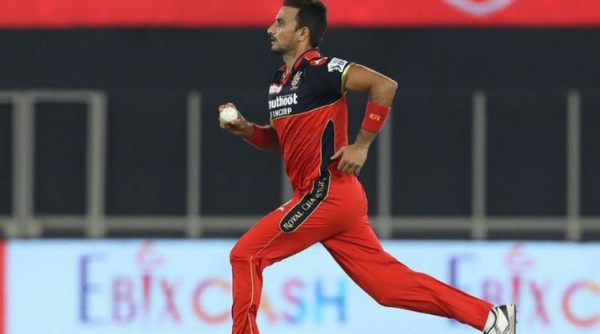 (Instagram/Harshal Patel)
(Instagram/Harshal Patel)
“I realised that at the end of the day, it is just a game. Sometimes you have to zoom out from this race and stop looking at yourself as a cricketer and look at yourself as a person. Those are the things which will give you a bigger purpose,” he says.
He turns philosophical: ”You are eventually going to die and nobody will remember how many wickets you have taken or how many runs you have scored. You need to find ways to make life meaningful, you can’t always be a ‘hands-on the wheel’ kind of person all the time.”
But he dealt with performance-related anxiety due to the ruthless nature of the IPL, where a player is dropped after one bad match. “In 2018, I realised that I don’t want to be a player who is playing only to complete the final XI, who plays when someone gets injured or someone is not in form, and who plays a couple of games and then gets dropped. I told myself that I want to be a player who can win games for his team, and it was the only way to ensure that I get to play all the games,” he adds.
Failure and the turnaround
In the 2018-2019 Ranji Trophy season, he picked up only 23 wickets from nine games. It seemed the consistency had deserted him. The 2019 IPL didn’t go according to plans either, as he fractured his hand after playing just two games.
He even decided to retire from red-ball cricket. But with his 2019 IPL ending prematurely, he got time to reassess his game. He analysed what he was doing, pieced together the missing links, refreshed his approach, and started anew. Something exceptional was just round the corner.
The turnaround began with the 2019 Syed Mushtaq Ali T20s, where Patel started opening the batting for Haryana. With field restrictions in place, he used the long handle well to rake in 374 runs at an average of 31.16 and a strike rate of 165.48. He was fourth in the list of highest run-getters. As is often the case, he translated the confidence into his bowling—snaffling19 scalps at an economy of 7.04 to be the joint second-highest wicket-taker in the tournament. His heroics led Haryana to the final where they eventually lost to Karnataka.
He continued his red-hot form in the 2019-20 Ranji Trophy, snaring 52 wickets in nine games, breaking left-arm spinner Rajinder Goel’s 36-year-old record for most wickets in a season for Haryana. In addition, while batting at No. 8, he scored 292 runs at an average of 22.46 with two half-centuries. Despite an extraordinary season, he was not even picked for the India A team.
Zaheer’s advice
A piece of advice from Zaheer Khan massively influenced his career. “When I was with DC and we were playing MI, I got a chance to speak with Zaheer bhai. I have this massive problem of my deliveries drifting down the leg stump, and I spoke to him about it. He spotted an issue with my release angle. With my angle, if I pitch the ball on the off-stump, it will automatically drift to the leg stump.
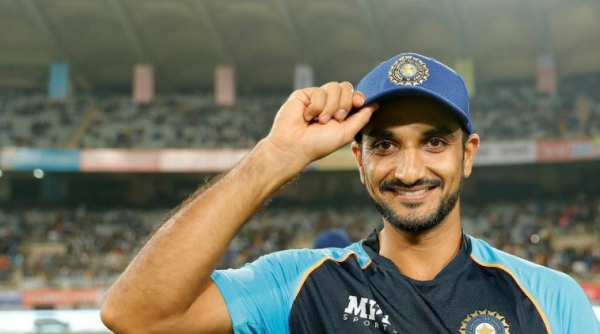 (Instagram/Harshal Patel)
(Instagram/Harshal Patel)
He suggested a minor tweak. “The release angle should target the sixth or seventh stump line and then the ball will hit the off stump, he advised me. A small tip made a massive difference in my consistency and changed me as a bowler,” recollects Patel.
Mastering the dipping yorker
There are few bowlers who have mastered the art of dipping yorker. Lasith Malinga was one, a natural at that because of his slinging action. Dwayne Bravo acquired it over time. Patel too has bagged a handful of wickets with his slow dipping yorkers.
“I always had the slower ball. Dipping yorker came out after toiling a lot in the Ranji Trophy on flat pitches,” he says.
He explains the nuance: “If you are getting swing, you get a very good backspin on it. It allows the ball to cut through the air and swing. The same concept applies to off-cutters and the slower yorkers. If you see my hat-trick wicket ball against Hardik (Pandya) in Dubai, it was a half-volley. But because of the back spin, it got stuck into the pitch and bounced and he top-edged it. If there was no back spin, he could have hit it easily.”
He aims to bowl it quickly. “I aim to bowl it quickly. My arm-speed should be faster than my normal deliveries and then the second thing is to put as much revolution on the ball as possible. My slower ball are my efforts ball,” he adds.
So cleverly disguised a delivery that it deceived even some of his noted RCB colleagues. “Someone like Virat Kohli, Ab de Villiers, and Glen Maxwell, have told me that they don’t see my slower ones coming out of my hand. That gives me enough confidence that if these people are not able to read it then most of the other batters won’t be able to read it,” he says.
On reading batter’s mind
Though not an expert quick, he has managed to outsmart some of the cleanest strikers of the game. “This ability to read the game comes with experience and game time. I have always been someone who has failed with his execution, never the planning. I was always good with getting under the skin of the batters, without saying anything. But I was always bad at execution. It took me around eight years to get it right,” he says.
On being death bowler
He was a bit surprised when he RCB entrusted with death-bowling duties, but grabbed the chance with both hands.
“RCB management trading me back and giving me this role changed my life completely. There are two or three career-defining instances for me. The first was when I moved to Haryana, the second was the 2018 IPL auction, and then RCB entrusted me with bowling in the death overs. To be honest, when the RCB management decided to give me the role of bowling in the death overs. I was a bit surprised but they had more faith in my ability than I had at that time,” he said.
Buoyed, he kept on churning one death-over masterclass after the other. But he had to deal with performance-related anxiety due to the ruthless nature of the IPL.
“My last competitive game was in IPL 2020, where I twisted my ankle and I was out for four and half months. The next competitive game I played was against MI in Chennai in the IPL 2021. I had zero game time, I was coming back from injury, so I’ve had massive performance anxieties,” he says.
But he learned to deal with it. “It’s a very mental thing, you have to figure out a way and how to get out of the mindset. If you continue to play with that mindset you will never be able to express yourself on the field. Every individual has to figure out how to get out of it. I just told myself that this is the opportunity I was looking for. I have to be that player who raises his hand whenever the team is in a tough situation and brings the team out of it,” he explains.
Occasionally, he would get a reality check or two. “When Jadeja smacked me for 37 runs in an over, it was a reality check for me. But in professional sport, you cannot run away from failure. If you don’t take on those situations, you will never be a match-winner. In my personal experience, I can say that being willing to fail has helped me to bring the best out of myself,” he says.
Death-over mastery
Patel is a big believer in pre-match planning. “Pre-match planning is important. When you are under the pump, your brain stops working, because there is so much adrenaline, there is so much fight or fight kind of situation, where you won’t be able to think clearly. So most of your planning has to be done off the field,” he says.
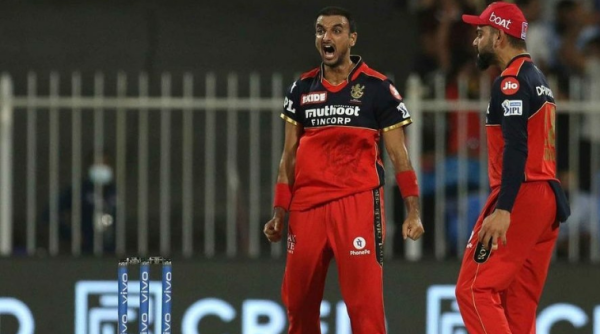 (Instagram/Harshal Patel)
(Instagram/Harshal Patel)
However, he changes his bowling according to the circumstances. “What I decide to bowl depends upon how I am seeing the game then.” “I am not someone who is shy of bowling 6 or 12 slower balls in a row. I know this is going to work. I know I can bowl a quick bouncer, quick yorkers, but I don’t need to bowl it right now. If the game situation calls that I need to bowl a yorker, or a slower one, I will do that without any hesitation,” he adds.
The second home
A ‘Patel’ from Ahmedabad plying his trade in Haryana seems bizarre. But it has a backstory. Patel made his List-A debut for Gujarat in 2009 but couldn’t break into the Ranji squad. But Anirudh Chaudhary, Indian manager from the U-19 World Cup in New Zealand, advised him to try for Haryana. He rented a flat in Rohtak and changed his residential address to be eligible to play for Haryana. “Words are not enough to describe how thankful I am to the Haryana cricket, Anirudh sir, and my teammates. I will always be grateful,” he signed off. In the end, it seems a more than inspired decision, as has been a lot of others.
He could relate to another Dylan song. His most famous one. Blowing in the Wind, and sing along; “How many roads must a man walk down, before you call him a man?”
Get latest updates on IPL 2024 from IPL Points Table to Teams, Schedule, Most Runs and Most Wickets along with live score updates for all matches. Also get Sports news and more cricket updates.












